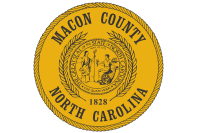The wildest show: Synchronous fireflies display untamed beauty in the Smokies
 A long-exposure photograph reveals the patterns of light synchronous fireflies spin in the darkness. Holly Kays photo
A long-exposure photograph reveals the patterns of light synchronous fireflies spin in the darkness. Holly Kays photo
I entered the lottery on a whim, figuring that, like 90 percent of my fellow entrants, I’d end up with nothing but a polite “thank you for entering” and an invitation to try again next year. I was stunned, frankly, to receive an email that instead began with the word “congratulations” and an invitation to start dreaming about a front-row seat to one of the region’s most spectacular natural phenomena.
That would be the flashing of the synchronous fireflies, Photinus carolinus.
Fireflies are a familiar sight to anyone who’s grown up in the Southeast, yellow lights blinking across grassy fields during the most beautiful hour of any summer day — dusk, as the sun sets and saturated greenery fades slowly to darkness.
But the synchronous fireflies are something different, akin to the hard-partying, sequin-wearing cousin of a demure wallflower type. They stay abed until the sun is gone, waiting for complete darkness to start the party.
The lady fireflies sit on the forest floor, emitting a weak little flash that apparently drives the gentlemen crazy. Perched in trees and shrubbery, the male fireflies flash their part — bright, white flashes sparkle in synchronous waves through the forest. The pattern is consistent, with the males flashing five to eight times in a row before pausing, allowing darkness to take over for a few brief seconds. In that pause, they search for the faint flash of a potential sweetheart, hoping to find a mate before the night is over.
Like many of the more showy elements of animal behavior, it’s all about reproduction, but standing in the midst of a forest full of blinking fireflies decorating the trees like Christmas lights, it’s easy to fool yourself into thinking there’s a less carnal purpose to the display — a motivation closer to artistry, magic and the pure desire for beauty in the world.
Related Items
At least, that’s how I’d remembered it when I put my name into the lottery this spring. I’d had the pleasure of seeing the fireflies at Elkmont Campground in the Great Smoky Mountains National Park once before, back in 2014. I remember so clearly standing there as darkness fell, seeing nothing of note, and wondering what all the fuss was about. Then it happened — the unmistakable cacophony of synchronous light. I knew why I’d come.
Synchronous fireflies can be found across the Southern Appalachians, but they have a specific set of habitat requirements that limit their population to pockets here and there. Living at elevations of 2,000 to 5,000 feet, they’re sensitive to light pollution and trampling of the ground, and they need moist soils, a comfortable temperature range and an open understory to see each other’s displays. The Elkmont area has all of that, and it’s well known to contain one of the most dramatic firefly light shows around. So dramatic, in fact, that the park had to start running the firefly viewing as a ticketed event, limiting the number of people on any given night and staffing the trail with rangers to ensure that visitors behave in a firefly-friendly manner.
This year, I was to be one of the lucky few granted a parking pass, allowing one carful to park at Sugarlands Visitor Center and ride the trolley up to the Little River Trail at Elkmont.
We arrived on the early end of the things, but not early enough to avoid waiting in a line several trolley-loads deep, populated with a combination of avid outdoors-lovers and folks venturing into the park for the first time. Despite the difficulty we humans always have with waiting, anticipation reigned stronger than anxiety as the line inched forward, finally disappearing as we made our way into one of the City of Gatlinburg trolleys and 6 miles uphill to Elkmont, where the magic was to happen.

Red light from visitors’ flashlights floods the forest as synchronous fireflies flash. Because white light disturbs the fireflies, the park provides red cellophane for visitors to cover their lights. Holly Kays photo
As dusk fell and the familiar yellow-flashing fireflies made their appearance, we found a nice spot along the trail, set up our chairs and the camera tripod — synchronous fireflies are one of the hardest subjects to photograph, which of course just fueled my enthusiasm for trying — and enjoyed the fact that the called-for rain had decided to hold off. The Smokies holds 19 known species of fireflies, and several members of that cast provided opening acts as the daylight waned into darkness.
With nothing but moon and stars left to light the sky, I saw them — crackles of light, like so many sparks from a sparkler. They celebrated in bursts through the understory, a soundless crackle-crackle-pop punctuated by the lazy drifting of blue ghost fireflies. It was mesmerizing, and peaceful, though I kept waiting for the show to reach the dramatic heights it had in 2014, when the fireflies had flashed like bulbs strung along the branches of towering trees.
When I looked at the time and saw it was nearly 11 p.m., I was shocked — because the hours had slipped away so quickly in that chair, along the summery green trail with the flashing of the synchronous fireflies and low blue pulses of the blue ghosts, but also because I wondered if my memory had failed me, if I’d somehow built up that 2014 experience to larger-than-life heights, fueled by the repetition of fawning reports emerging from all corners of the internet.
But that’s not what happened, as I learned later. As with people, the seasons hit fireflies differently from year to year. Sometimes, mitigating circumstances force a last-minute change of plans.
This year featured some weird weather, making it harder than usual to predict exactly when the peak display would fall. April 2018 was one of the coldest Aprils on record, and May was forecast to be cool as well — though, in actuality, it turned out to be quite hot, speeding up firefly development and causing the trolley dates to fall in the middle and later part of the display period instead of smack in the middle, as is the goal. My ticket, dated for the second-to-last day of the event, would have been on the trailing end, while in 2014 I hit the peak exactly.
But that’s not a disappointment, necessarily. Sometimes quiet and peaceful beauty is just as fulfilling as high drama, and honestly there’s comfort in the knowledge that, as much as we might sometimes like to be, we aren’t yet capable of pinning nature down completely.
We can try, of course. We can take our measurements, make our guesses, design our systems, build our cages. But at the end of the day, wilderness will still fight to be wild, and the fireflies will still flash when they will. And if we’re lucky enough to catch the show — well then, good for us. The only sensible thing to do is sit back, enjoy, and take in the beauty.









